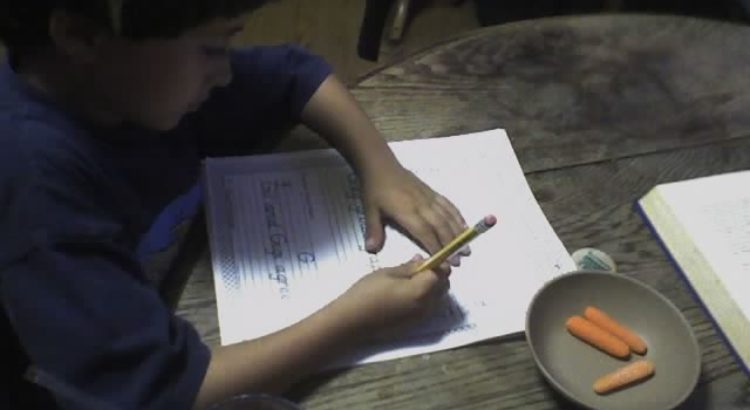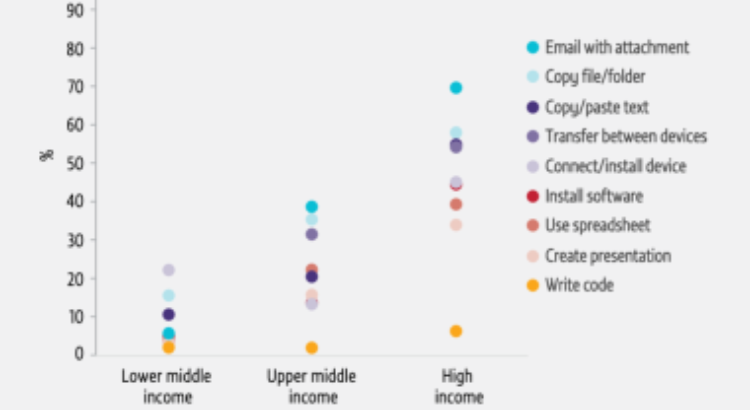Europa/Francia/Gem Report
The onset of Covid-19 means that teachers like me are suddenly being asked to do completely different jobs. While we were in the classroom engaging with children before, now we’re at home and trying to engage with their parents. I work in a very underprivileged school in Marseille. I now find that part of our work is almost humanitarian. I have had to try to deduce whether the families of the children I was teaching have enough money to eat or not, as many were benefitting from school meals or other forms of social aid that they can’t now access, as lots of the benefits centres are closed. Lots of the markets selling cheaper food are also closed, as are the associations that would help with food distribution. My colleagues and I are proud to say that about 30 families from my school will be receiving food boxes this week.
But this hasn’t been easy. My school is made up of several nationalities, with lots of children from Northern Africa and the Middle East. Many of the families of the children I teach often don’t speak French. So the parents I am calling might just say ‘ok, ok, ok’ because they don’t understand what I’m asking. I’ve had to set up calls with other parents who can translate and speak to them on the side to really get the truth. I have realised along the way that many of those parents are ashamed to tell me they need help. I’m their kid’s teacher after all, not their social worker. This is new for me, but it’s also new for them.
Aside from those basic needs, I know that these children don’t have the resources at home to properly carry out any form of distance learning. I know they haven’t got a printer or a computer. Some of them may have access to a mobile phone, sharing it with their sibling or parents, for instance. But their internet isn’t guaranteed either. I have to take all these difficulties into account when I’m setting and handing out work to my students. I’m a pre-school teacher and, knowing how bad screens can be for that age group, I have opted for voice recordings and short video tutorials with easy instructions for work they can do at home, such as simple drawings or tracing letters.
I can see that even email correspondence isn’t going to work. Some of the parents of the children in my class do not know how to send an email. Many are embarrassed about their level of French so, if they do send me a drawing or piece of work their child has done, it will come with no accompanying text or just a very short sentence.
It is frustrating to me, as I am used to working with disadvantaged children, so I know the different levels of support needed. I know that sending a link isn’t enough. “La continuité pédagogique”, as is being asked of us by the Minister of National Education, is simply not possible for children I teach. No one can guarantee that learning will continue when it’s being delegated to parents. Teaching is a profession, after all. To learn new concepts, children need a trained teacher to guide them, and need to learn to together as a group, acquiring social skills at the same time from their peers.
In the current condition, the double-edged sword of “la continuité pédagogique” asked by the Minister is this: If the children are privileged, their parents are probably trying to telework and don’t have time to home-school; if the children are under-privileged, their parents might have the time, but they don’t know how to work with the materials they’re receiving. The barrier might be a simple as language. Teacher unions keep saying this, but it’s not cutting through.
I’m preparing myself for schools to be shut for a while; possibly until the next school year in September. And then we will have to take a careful assessment of each child, as they arrive back in class. The lessons we’ve been giving at a distance simply cannot be considered as ones that all will have learnt. This assessment, which will help to split children by their learning progress, will be even more crucial than usual. It’s our job and it takes time, but we can and will do it. It’s a huge, multi-faceted challenge. But I know we, as teachers, will work through it.
Fuente: https://gemreportunesco.wordpress.com/2020/04/16/charlotte-a-teacher-from-marseille-were-being-asked-to-do-a-completely-different-job-from-before/










 Users Today : 36
Users Today : 36 Total Users : 35460299
Total Users : 35460299 Views Today : 52
Views Today : 52 Total views : 3419020
Total views : 3419020